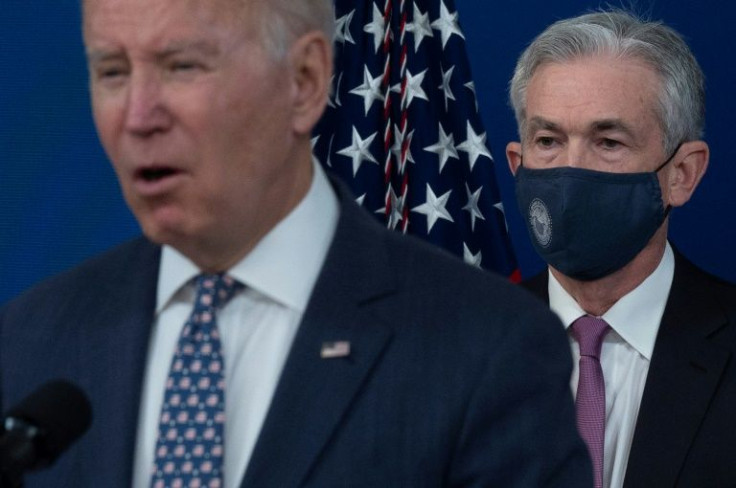Retail Sales Slowdown Adds To Stagflation Fears On Wall Street

A slowdown in retail sales reported on Wednesday added to Wall Street's fears of stagflation, sending all major averages lower in early morning trading.
November retail sales rose at a lackluster rate of 0.3%, down from 1.8% in October, missing market expectations of 0.9%. Retail sales excluding volatile gas sales rose 0.2%, down from a 1.6% rise in October.
The slowdown in retail sales follows a couple of other recent reports by the U.S. government indicating that the economy is cooling. A couple of weeks ago, the U.S. Bureau of Labor Statistics (BLS) reported that the U.S. economy created 210,000 new jobs in November, down from a revised 546,000 in October and below market forecasts of 550,000 jobs.
U.S. gross domestic product (GDP), a measure of the market value of goods and services produced across the nation, slowed down sharply in Q3 from the previous two quarters.
The slowdown in the U.S. economy comes at a time when inflation continues to rise. Last week, the government reported that the Consumer Price Index (CPI), a measure of inflation at the retail level, increased 6.8%, the highest since 1982. This week, the Producer Price Index (PPI), a measure of inflation at the wholesale level, rose 9.6%, the highest since the 1980s.
Inflation isn't a transitory phenomenon, as the Federal Reserve and some Wall Street analysts have been advocating for months, but a permanent phenomenon, devastating households with tight budgets.
When weak growth and elevated inflation are looked at together, they make a strong case for stagflation.
Stagflation is usually caused by a failure on the market's supply side to catch up with the demand side of the market. There's plenty of talk about this situation caused by supply-side bottlenecks due to the pandemic. They make it hard for businesses to develop enough merchandise to meet the rising demand for goods and services.
Stagflation is also caused by rising wages due to mismatches of the demand for and the supply of labor, pushing wages higher, which feeds into inflation as firms pass the higher labor costs on to consumers. The unemployment rate dropped to 4.2% from 4.6%, below market forecasts of 4.5%, meaning that labor becomes scarce and explains a 4.8% jump in labor costs. Thus, the recent Wall Street sell-offs.
Stagflation complicates matters for investors. Economic stagnation squeezes the top line of listed firms, as households cut down on buying the goods and services these companies sell. And rising materials and labor costs squeeze the bottom line of listed firms that lack the pricing power to pass on these costs to consumers.
Stagflation also complicates the job of the Federal Reserve in pursuing its dual mandate: high employment and low and steady inflation.
Conventional and nonconventional monetary policy can deal with one mandate at a time. They can either pursue higher employment or fight inflation, but not both, meaning that the Fed is in a bind. It faces the dilemma of tightening up monetary policy to fight inflation or easing up monetary policy to fight the economic slowdown and keep employment high.
For the time being, the Fed has been leaning toward fighting inflation. In congressional testimony, Fed Chairman Jerome Powell announced the Fed will speed up tapering, the rolling back of its bond-buying program, meaning that the Fed will stop adding liquidity to the economy, a source of rising prices.
© Copyright IBTimes 2024. All rights reserved.






















